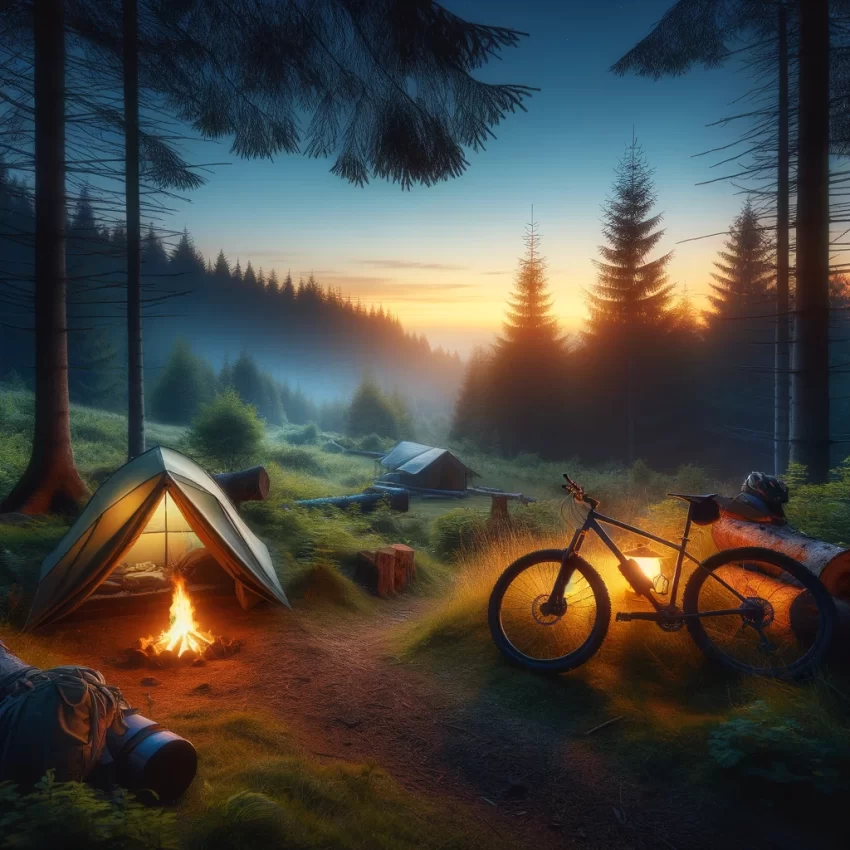Trying new things can be daunting, especially when it comes to bike packing. Between managing your bike, camping gear, and the planning process, the task can seem overwhelming. However, this guide aims to simplify the process, share effective strategies, debunk common misconceptions, and generally make your bike packing experience a bit easier. By the end of this, you should feel ready to hop on your bike and enjoy a night under the stars.
An Incredible Resource
For those embarking on this adventure, bikepacking.com offers an invaluable resource page, including the Local Overnighter Project. This initiative seeks to compile a comprehensive list of bike packing routes worldwide, curated by enthusiasts like you, right from your backyard. Whether you’re interested in exploring these overnighters or contributing your own, there’s a wealth of information just a click away.
Building a Bike Packing Community
A crucial first step is to build or join a bike packing community. Connecting with friends or a group with similar goals can be incredibly beneficial. Adventure partners not only provide motivation and ideas but also help with route planning and gear sharing. This camaraderie not only lightens your load but also enriches the experience, making it more memorable. Remember, being nice to your travel companions can have practical benefits too, like securing a spot in their pack for your whiskey or beer.
The Right Bike for Bike Packing
Many believe they need a specialized bike for bike packing, but this is a misconception. If you have a bike, you’re ready to go. Whether it’s a hardtail mountain bike, a gravel bike, or even a full suspension bike like the Trek Fuel EX5, the key is to use what you have. The most important factor is that your bike is functional, fits well, shifts and brakes properly, and has adequately inflated tires. If you’re unsure about your bike’s condition, a visit to your local bike shop for a professional check-up is a wise step.
Packing Gear on Your Bike
Bike packing bags are designed to distribute weight evenly on your bike, but they’re not strictly necessary for beginners. Getting creative with items like dry bags, bungee straps, or rope can be just as effective. It’s essential to ensure that nothing obstructs your leg movement and to utilize various spots on your bike for storage, including the handlebars, seat, or saddle rails. Accessory bags, such as stem bags or top tube bags, are convenient for items you might need throughout the day, while a backpack can carry lighter items to ease pressure on your seat bones.
Sleeping Under the Stars
Much of the gear you’d use for car camping or backpacking is suitable for bike packing. While lightweight gear can make your ride easier, it’s not essential. A tent, bivysack, or another shelter, along with a sleeping bag and pad, are must-haves. Packing a change of clothes for camp can also significantly enhance comfort. Remember, the goal is to carry what you need without overburdening yourself.
Fueling the Engine
Proper nutrition and hydration are key to enjoying your bike packing journey. For short trips, consider packing ready-to-eat meals like burritos or sandwiches, allowing you to leave cooking equipment at home. For longer rides, dehydrated meals offer a lightweight, tasty option. Keeping snacks within easy reach and focusing on calorie-dense foods will help maintain energy levels. Hydration is equally crucial, and utilizing the mounting points on your bike for water bottles or carrying a hydration pack are effective strategies to ensure you stay hydrated.
Bike Repairs on the Go
Basic knowledge of bike repairs is essential. Familiarizing yourself with fixing flats, addressing broken chains, and adjusting brakes and gears can prevent minor issues from ending your trip. Local bike shops often offer clinics on these skills, and a plethora of online resources are available for those seeking to learn.
Planning Your Route
Choosing a route that matches your comfort level and experience is crucial. Whether you opt for a loop, an out-and-back, or a point-to-point journey, consider factors like water sources, resupply points, and camping regulations. Starting with shorter routes and gradually increasing distance as your confidence grows is a sound approach.
Conclusion: The Joy of Bike Packing
The true reward of bike packing comes from the freedom to explore, the connection with nature, and the bonds formed with fellow adventurers. So gather your gear, plan your route, and set out on an unforgettable journey under the stars. And remember, whether you’re a seasoned bike packer or a curious newcomer, the adventure awaits.
Support Us: Check out our recommended products on Amazon.

